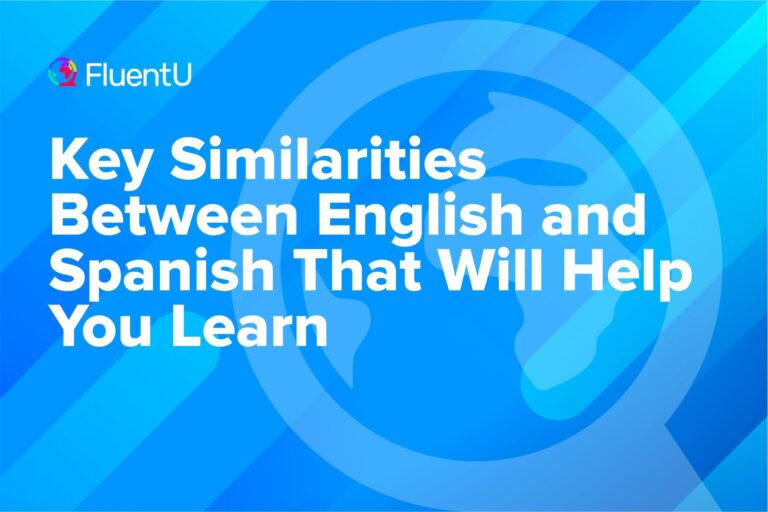Key Ways to Say “How Are You?” in Spanish

“Hey, what’s up?”
“How’s it going?”
“How have you been?”
In our everyday encounters with other people, we use these phrases over and over. But let’s have a look at eight other formal and informal ways to say “How are you?” in Spanish that are a little more exciting.
I’ll even provide some appropriate responses.
Download: This blog post is available as a convenient and portable PDF that you can take anywhere. Click here to get a copy. (Download)
The Basic Greeting: ¿Cómo Estás?
| ¿Cómo estás? | Informal | Singular |
| ¿Cómo está (usted)? | Formal | Singular |
| ¿Cómo están (ustedes)? | Informal / formal (Latin America) Formal (Spain) | Plural |
| ¿Cómo estáis (vosotros)? | Infomal (Spain) | Plural |
Let’s have a look at each one of these in more detail.
In Spanish, the way you conjugate a verb changes depending on how many people you’re addressing, and on whether you’re in a formal or informal situation. In this case, the important verb is estar (to be).
So, depending on who you’re speaking to, you may have to slightly adjust your conjugation. For each of the examples below, I’ll provide the appropriate pronoun. When speaking, tú is not usually used in these phrases, but for the others, the pronouns are optional when in parentheses.
The most basic greeting that you would use to speak to one person in an informal setting—someone you would refer to as tú— is:
Singular, infomal: ¿Cómo estás?
The pronoun usted refers to a singular “you” in a formal situation. Use this second greeting when talking to a stranger, someone much older than you or someone in a position of superiority:
Singular, formal: ¿Cómo está (usted)?
For example, you might use ¿Cómo está? when greeting your friend’s grandfather, your boss, your professor, the queen of Spain and so on. Visit this post to learn more about when to use tú vs. usted, including example sentences and tips.
Ustedes refers to a plural “you.” Across Latin America, ustedes can be used in formal or informal situations. In Spain, it’s used exclusively in formal situations (like usted). Use these when greeting two or more people at the same time:
Plural, formal / informal: ¿Cómo están (ustedes)? (Latin America)
Plural, formal: ¿Cómo están (ustedes)? (Spain)
If you happen to be speaking Spanish in Spain, use vosotros when talking to a group of people in an informal situation, such as when you’re speaking to a group of friends. Notice the -áis ending in the conjugation this time:
Plural, informal: ¿Cómo estáis (vosotros)? (Spain)
There are many ways to respond to the greeting “How are you?”
In Spanish, a safe response is:
Bien, gracias. ¿Y tú? — Fine, thanks. And you?
Bien. — Good.
Bastante bien. — Pretty good.
Muy bien. — Very good.
This is a polite and simple way to keep the conversation going.
Of course, if you’re in a formal situation or talking to more than one person, you’ll want to substitute tú for usted, ustedes or vosotros where appropriate.
If you’re unclear on verb conjugation, check out this basic guide to conjugating the Spanish present tense.
8 Different Ways to Say “How Are You?” in Spanish
Before we get into the different variations, here’s a quick lesson on basic greetings from our YouTube channel:
For each of the greetings below, I’ll let you know how to politely respond. You can, of course, also respond to any of these greetings by letting your conversation partner know how you’re actually doing.
But when you’re talking with strangers or acquaintances, it’s good to know how to give a noncommittal response like “It’s all good” or “Oh, nothing much.”
¿Cómo andas? — How’s it going?
The verb andar means “to walk” or “to go,” so this greeting is similar to the English “How’s it going?” It’s slightly more casual and slangy than the basic ¿Cómo estás?
Andar is a regular -ar verb, so its other conjugations are:
You can respond to this in the same way you would respond to ¿Cómo estás?
¿Qué me cuentas? — What’s going on?
This greeting is quite slangy. It literally translates to “What do you tell me?” Think of it as a Spanish equivalent to the English “What’s going on?”
It would be a little awkward to use this greeting in the usted form since it’s so informal—but here are all of the conjugations just in case. Note here that contar is a stem-changing verb!
For usted: ¿Qué me cuenta?
For ustedes: ¿Qué me cuentan?
For vosotros: ¿Qué me contáis?
If someone asked you “What’s going on?” in English, you might respond with “Oh, not much.” It’s similar in Spanish. If someone asks you ¿Qué me cuentas? you might respond with something like:
Nada. — Nothing.
Nada en especial. — Nothing special.
Lo normal. — The usual.
No mucho. — Not much.
It would sound a little strange to respond with something like Bien, gracias. This might be tricky to keep track of, but if you practice enough, you’ll unconsciously start to realize what response sounds right and what sounds awkward.
¿Cómo te va? — How’s it going?
This greeting translates to something like “How’s it going?” It can be used in formal or informal situations. In this case, to change the greeting you’ll have to change the indirect object pronoun from te to le, les or os:
For usted: ¿Cómo le va?
For ustedes: ¿Cómo les va?
For vosotros: ¿Cómo os va?
When responding to this, you can re-use the verb va (it goes), from the infinitive ir (to go):
Me va bien. — It’s going well.
Me va mal. — It’s going badly.
You can replace bien or mal with any other appropriate adjective you can think of. Some examples are:
Espectacular. — Spectacular.
Genial. — Great.
Normal. — Normal.
Regular. — Just okay.
Terrible. — Terrible.
¿Cómo va todo? — How’s everything going?
Very similar to the last one, this phrase translates to “How’s everything going?”
Luckily, in this case there are no verbs to conjugate and no indirect objects to change around—you can use this same greeting regardless of what situation you’re in.
To respond, you can say the following, filling in whatever adjective suits your mood (see above for examples):
Va todo ___. — Everything is ___ .
¿Cómo van las cosas? — How are things going?
This greeting means “How are things going?” Like the previous case, there is no need for conjugation here, since the verb van (they go) refers to the noun las cosas (the things).
If somebody asks you this, you can respond with a simple bien (good) or mal (bad), or you can make a full sentence such as:
Las cosas van bien. — Things are going well.
¿Qué tal? — What’s up?
This is an informal greeting to be used among friends in a casual setting. It is similar to the English “What’s up?”
However, unlike the English “What’s up?” you should not respond to ¿Qué tal? with “Nothing much” or any variant thereof.
Instead, respond with an adjective—bien, mal, regular, genial, terrible, etc.—like you would respond to ¿Cómo estás?
¿Qué hay? — What’s new?
This super informal greeting literally translates to “What is there?” and should only be used in very casual, friendly situations. Again, no conjugations to worry about here. You can think of it as a shortening of this:
¿Qué hay de nuevo? — What’s new?
A good, appropriately casual response to this greeting would be something like:
Todo bien. — All good.
No me quejo. — Can’t complain.
¿Qué pasa? — What’s up?
This Spanish greeting has crossed over into English-language slang, so you may already be familiar with it! It’s another super colloquial way to ask “What’s up?” or “What’s going on?”
A normal response would be some variant of nada (nothing) or lo normal (the usual). See the section on ¿Qué me cuentas? for some examples of good responses.
Why You Should Go Beyond the Basics with “How Are You?”
Sure, the regular phrases will get you through basic Spanish conversations. But why stop there? There are tons of ways to greet and be greeted in Spanish—it’s a good idea to know more than one.
- Learning alternate greetings can allow you to vary your tone to suit more formal or casual situations. You wouldn’t greet your best friend the same way you would greet a client, right? It’s the same in Spanish—different greetings sound more natural in different company.
- Varying your speech patterns helps you sound more like a native speaker. I’ll bet when you talk in English, you don’t constantly repeat the phrase “How are you?” You probably change it up. Moving beyond “How are you?” means moving beyond classroom Spanish and learning real-world Spanish.
- Learning slangy alternatives to common phrases can be a lot of fun. If you’re ever unsure about a slang term, language learner forums like the ones at WordReference can be great resources. You can also use the contextual dictionary on the language learning program FluentU.
FluentU takes authentic videos—like music videos, movie trailers, news and inspiring talks—and turns them into personalized language learning lessons.
You can try FluentU for free for 2 weeks. Check out the website or download the iOS app or Android app.
P.S. Click here to take advantage of our current sale! (Expires at the end of this month)

- Finally, it’s good to expand your vocabulary because—duh!—native speakers will use these phrases when they talk to you! When they do, you’ll want to understand and be able to respond.
The next time you have to greet someone in Spanish, move out of your comfort zone!
You wouldn’t just repeat “How are you?” over and over again in your native language, and there’s no reason to do so in Spanish.
Native speakers will pick up on your varied vocabulary, and it’ll make you sound much more natural.
Download: This blog post is available as a convenient and portable PDF that you can take anywhere. Click here to get a copy. (Download)
And One More Thing…
If you've made it this far that means you probably enjoy learning Spanish with engaging material and will then love FluentU.
Other sites use scripted content. FluentU uses a natural approach that helps you ease into the Spanish language and culture over time. You’ll learn Spanish as it’s actually spoken by real people.
FluentU has a wide variety of videos, as you can see here:

FluentU brings native videos within reach with interactive transcripts. You can tap on any word to look it up instantly. Every definition has examples that have been written to help you understand how the word is used. If you see an interesting word you don’t know, you can add it to a vocab list.

Review a complete interactive transcript under the Dialogue tab, and find words and phrases listed under Vocab.

Learn all the vocabulary in any video with FluentU’s robust learning engine. Swipe left or right to see more examples of the word you’re on.

The best part is that FluentU keeps track of the vocabulary that you’re learning, and gives you extra practice with difficult words. It'll even remind you when it’s time to review what you’ve learned. Every learner has a truly personalized experience, even if they’re learning with the same video.
Start using the FluentU website on your computer or tablet or, better yet, download the FluentU app from the iTunes or Google Play store. Click here to take advantage of our current sale! (Expires at the end of this month.)








